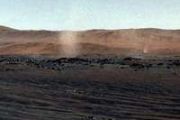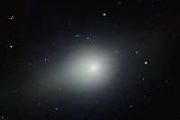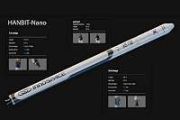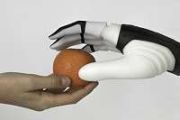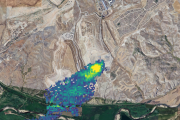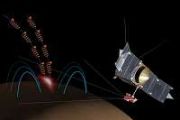
Copernical Team
Lunar samples record impact 4.2 billion years ago
 An international team of researchers led by The Open University (OU) has provided the first sample-based evidence, which they argue reflects the age of the Serenitatis Basin - one of the oldest craters on the Moon.
The formation and ages of the lunar basins and craters, created during large collisional impact events during the first ~500 million years of the Solar System history, have fasc
An international team of researchers led by The Open University (OU) has provided the first sample-based evidence, which they argue reflects the age of the Serenitatis Basin - one of the oldest craters on the Moon.
The formation and ages of the lunar basins and craters, created during large collisional impact events during the first ~500 million years of the Solar System history, have fasc The sun's clock
 Not only the very concise 11-year cycle, but also all other periodic solar activity fluctuations can be clocked by planetary attractive forces. This is the conclusion drawn by Dr. Frank Stefani and his colleagues from the Institute of Fluid Dynamics at the Helmholtz-Zentrum Dresden-Rossendorf (HZDR) and from the Institute of Continuous Media Mechanics in Perm, Russia.
With new model calcul
Not only the very concise 11-year cycle, but also all other periodic solar activity fluctuations can be clocked by planetary attractive forces. This is the conclusion drawn by Dr. Frank Stefani and his colleagues from the Institute of Fluid Dynamics at the Helmholtz-Zentrum Dresden-Rossendorf (HZDR) and from the Institute of Continuous Media Mechanics in Perm, Russia.
With new model calcul NASA pursues greener, more efficient spacecraft propulsion
 NASA and the space industry will conduct several missions over the next year to test more efficient, environmentally friendly spacecraft, including a non-toxic propellant and solar power.
The rapid expansion of private spaceflight, along with planned missions to the moon and Mars, has prompted a need for easier handling of spacecraft and their fuel, Jeff Sheehy, NASA's chief engineer fo
NASA and the space industry will conduct several missions over the next year to test more efficient, environmentally friendly spacecraft, including a non-toxic propellant and solar power.
The rapid expansion of private spaceflight, along with planned missions to the moon and Mars, has prompted a need for easier handling of spacecraft and their fuel, Jeff Sheehy, NASA's chief engineer fo NASA, SpaceX Update Crew Launch and Return Dates
 NASA and SpaceX have adjusted target launch and return dates for upcoming crew missions to and from the International Space Station based on visiting vehicle traffic.
NASA's SpaceX Crew-3 mission now is targeting launch no earlier than Sunday, Oct. 31, with NASA astronauts Raja Chari, Tom Marshburn and Kayla Barron and ESA (European Space Agency) astronaut Matthias Maurer. Crew-3 will laun
NASA and SpaceX have adjusted target launch and return dates for upcoming crew missions to and from the International Space Station based on visiting vehicle traffic.
NASA's SpaceX Crew-3 mission now is targeting launch no earlier than Sunday, Oct. 31, with NASA astronauts Raja Chari, Tom Marshburn and Kayla Barron and ESA (European Space Agency) astronaut Matthias Maurer. Crew-3 will laun Discovery of the largest rotation in the universe
 By mapping the motion of galaxies in huge filaments that connect the cosmic web, astronomers at the Leibniz Institute for Astrophysics Potsdam (AIP), in collaboration with scientists in China and Estonia, have found that these long tendrils of galaxies spin on the scale of hundreds of millions of light years. A rotation on such enormous scales has never been seen before. The results published in
By mapping the motion of galaxies in huge filaments that connect the cosmic web, astronomers at the Leibniz Institute for Astrophysics Potsdam (AIP), in collaboration with scientists in China and Estonia, have found that these long tendrils of galaxies spin on the scale of hundreds of millions of light years. A rotation on such enormous scales has never been seen before. The results published in G7 nations commit to the safe and sustainable use of space
 Today at the G7 Leaders' Summit in Carbis Bay, Cornwall, delegates from Canada, France, Germany, Italy, Japan, the USA, the UK and the EU pledged to take action to tackle the growing hazard of space debris as our planet's orbit becomes increasingly crowded.
One of the biggest global challenges facing the space sector is orbital congestion and space debris. There are currently an estimated
Today at the G7 Leaders' Summit in Carbis Bay, Cornwall, delegates from Canada, France, Germany, Italy, Japan, the USA, the UK and the EU pledged to take action to tackle the growing hazard of space debris as our planet's orbit becomes increasingly crowded.
One of the biggest global challenges facing the space sector is orbital congestion and space debris. There are currently an estimated China ready to launch first crew to new space station
 The first crew for China's new space station prepared to blast off this week for the latest step in Beijing's ambitious programme to establish itself as a space power.
The mission is China's first crewed spaceflight in nearly five years, and a matter of prestige for the government as it prepares to mark the 100th birthday of the ruling Communist Party on July 1 with a propaganda blitz.
A
The first crew for China's new space station prepared to blast off this week for the latest step in Beijing's ambitious programme to establish itself as a space power.
The mission is China's first crewed spaceflight in nearly five years, and a matter of prestige for the government as it prepares to mark the 100th birthday of the ruling Communist Party on July 1 with a propaganda blitz.
A First-of-its-kind study finds lightning impacts edge of space in ways not previously observed
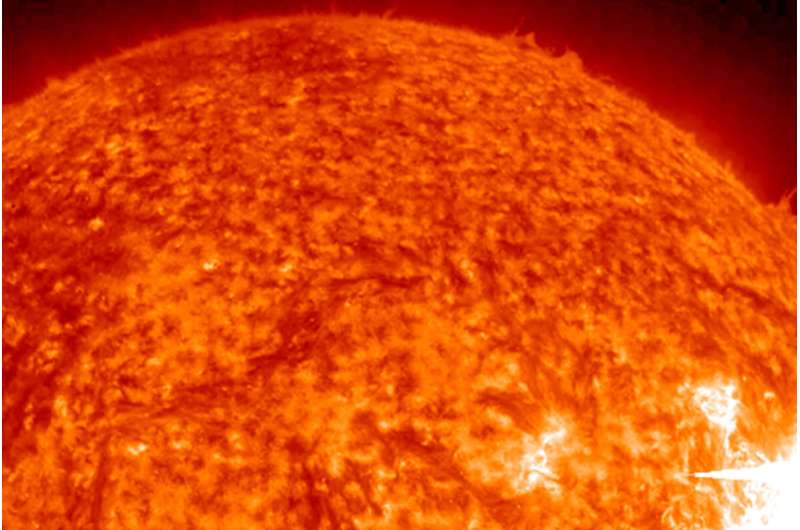
Solar flares jetting out from the sun and thunderstorms generated on Earth impact the planet's ionosphere in different ways, which have implications for the ability to conduct long range communications.
A team of researchers working with data collected by the Incoherent Scatter Radar (ISR) at the Arecibo Observatory, satellites, and lightning detectors in Puerto Rico have for the first time examined the simultaneous impacts of thunderstorms and solar flares on the ionospheric D-region (often referred to as the edge of space).
In the first of its kind analysis, the team determined that solar flares and lightning from thunderstorms trigger unique changes to that edge of space, which is used for long-range communications such the GPS found in vehicles and airplanes.
The work, led by New Mexico Tech assistant professor of physics Caitano L.
What mission could detect oceans at Uranus' moons?
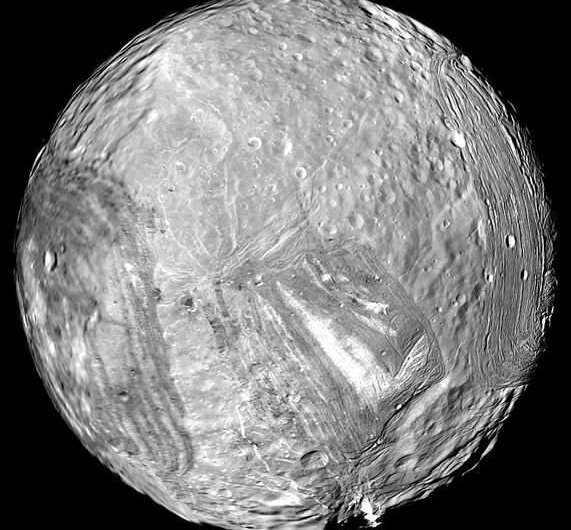
Exploration of ocean worlds has become a hot topic of late, primarily due to their role as a potential harbor for alien life. Moons that have confirmed subsurface oceans garner much of the attention, such as Enceladus and Europa. But they may not be the only ones. Uranus' larger moons—Miranda, Ariel and Umbriel could potentially also have subsurface oceans even farther out into the solar system. We just haven't sent any instruments close enough to be able to check. Now, a team led by Dr. Corey Cochrane at NASA's Jet Propulsion laboratory has done some preliminary work to show that a relatively simple flyby of the Uranian system with an averagely sensitive magnetometer could provide the data needed to determine if those larger moons harbor subsurface oceans. This work is another step down the path of expanding what we think of as habitable environments in the solar system.
NASA approves development of asteroid-hunting Near-Earth Object Surveyor space telescope
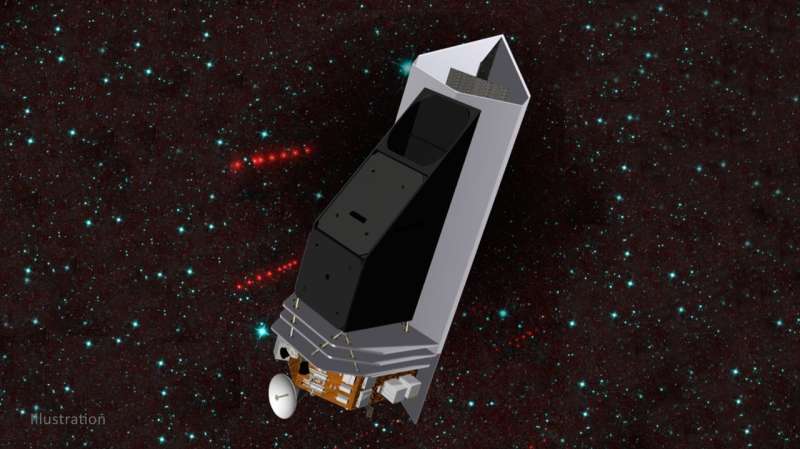
NASA has approved the Near-Earth Object Surveyor space telescope (NEO Surveyor) to move to the next phase of mission development after a successful mission review, authorizing the mission to move forward into Preliminary Design (known as Key Decision Point-B). The infrared space telescope is designed to help advance NASA's planetary defense efforts by expediting our ability to discover and characterize most of the potentially hazardous asteroids and comets that come within 30 million miles of Earth's orbit, collectively known as near-earth objects, or NEOs.
"NEO Surveyor will have the capability to rapidly accelerate the rate at which NASA is able to discover asteroids and comets that could pose a hazard to the Earth, and it is being designed to discover 90 percent of asteroids 140 meters in size or larger within a decade of being launched," said Mike Kelley, NEO Surveyor program scientist at NASA Headquarters.










